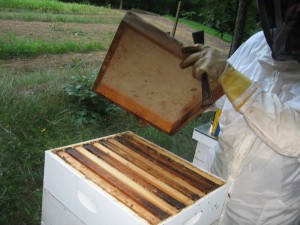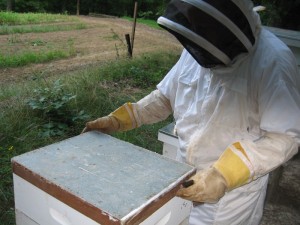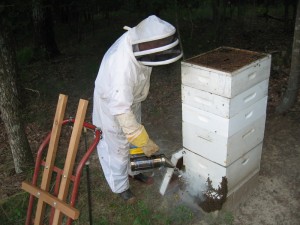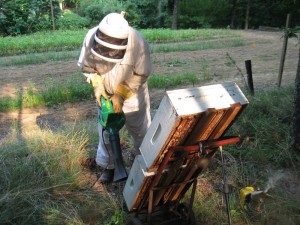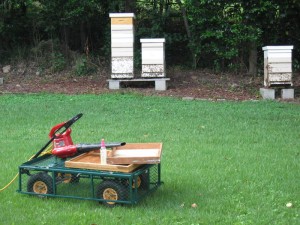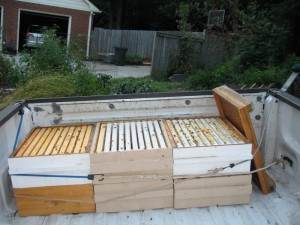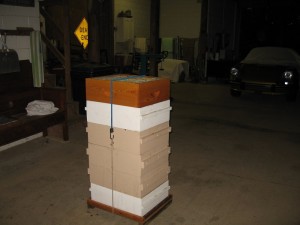In Birmingham, most of the “nectar flow” is over by the end of June. If all has gone well in the beeyard, the bees have collected the nectar, converted it to honey, and capped it in anticipation of later use. It is said that one pound of honey represents 50,000 miles of bee flight, and one forager bee is responsible for the production of 1/12 teaspoon of honey in its lifetime. The White House bee hive produced 140 pounds of honey last year; I think the world record from a single hive is more than 400 pounds.
Some beekeepers extract honey a few frames at a time throughout the season, some harvest in May and again in July or August, while others harvest once a year. My mentor’s strategy is straightforward – honey is harvested on 4th of July weekend. He thinks setting up for honey extraction is enough of a hassle that it should only be done once a year.
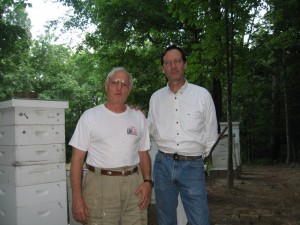
I’m going to help Dr. Hurst harvest his honey and then do my own. Note the shallow supers on the hive – this is an unusual size. Mine are “mediums”, about an inch taller. Professional honey producers often use “deeps” for both brood boxes and honey supers.
There are different ways to remove the bees from the honey supers: drive them out with smoke or bee repellent, install a one-way gate (a “bee escape”) that allows them to leave but not reenter, or blow them out with a leaf blower. We are going to try several techniques. Dr. Hurst usually just smokes and blows them out, but we are going to try a bee repellent today.
The bee repellent we used was “Bee-Quick,” a liquid with a pleasant odor reminiscent of almond and cherry (its chief ingredient is benzaldehyde, the primary component of bitter almond oil). Another bee repellent, “Bee-Go,” is supposedly more effective, but it has a foul odor. Bee-Quick is sprayed onto a fume board, which is then mounted above the top super. After the bees are driven down into the super below (this takes a few minutes), the top box is removed and the fume board reinstalled.
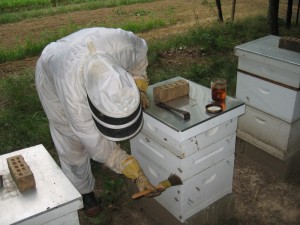
Application of kerosene around the cracks of the hive to limit robbing of hives by other bees. (This clearly dispersed the bees, but I didn’t bother with it for my hives. It may be more useful with older boxes that have some holes.)
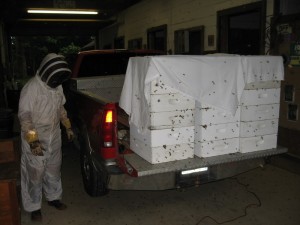
We stored the honey supers overnight in a barn to give the bees a chance to disperse and return to their hives.
I harvested from my own hives the next day. The combination of Bee-Quick and a leaf blower worked well, and I didn’t bother with a smoker. I had started the year with two hives, one of which swarmed, giving me three. I wound up with a total of six honey supers to remove.

